Fishing for crucian carp is not easy, as this is a coarse species that can be extremely hard to find and catch. It took me many years to land my first crucian. And while it’s still not easy to catch them, I have been able to catch quite a few since and to perfect by tactics. So in order to help you succeed on the bank, I decided to write this helpful guide.
The best way to catch crucian carp is the lift method. All you really need is a light float, an anchor weight and a small wide gape hook, baited with a few maggots, a single sweetcorn, casters, hempseed, or a soft pellet. You will find crucian in small, shallow venues with a lot of vegetation.
Continue to read this article to get valuable and effective tips on how to catch crucian carp!
What Is the Best Way to Catch Crucian Carp?
Float fishing is and will always be the best and most effective way to catch crucian carp. As these are extremely careful and shy fish, using very light tackle is the key to success.
A super light float setup will allow you to do just that. More specifically, fishing the lift method with a very light 2-3BB crystal waggler and a small anchor weight that’s just heavy enough to overload the waggler is the perfect setup to target crucians.
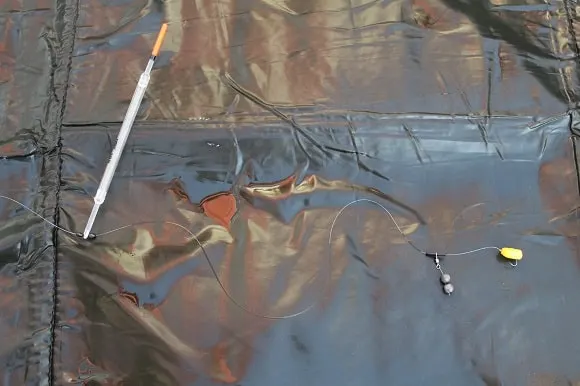
I prefer using my mainline straight down to the hook, as it gives me the most direct of connections to the fish. Alternatively, you can connect a few feet of 4lb fluorocarbon to the end of your mainline. You can use an Albright or blood knot to do so.
Trap both your float and anchor weight with two small line stops, so that you can easily and swiftly adjust both your fishing depth and the distance between your weight and hook.
You will want to present your hookbait on the bottom at all times, which is where the crucian are feeding. Set the depth of your float so that only the red tip will be visible (this usually demands a few casts and depth adjustments). When you’ve found the right depth, you are ready for those amazing lift bites!
You won’t have to cast out your float rig very far. The vast majority of crucian carp are caught very close to the margins, which is where they commonly have their feeding routes. So really, a few feet off the bank is all you need!
This highly sensitive tackle will indicate the crucian’s often so delicate and careful bites beautifully, which will improve your chance of actually landing a fish immensely.
Of course, your rod, reel and mainline will also have to be of the very light variety, which we will cover in the next section.
What Gear Do You Need to Catch Crucian Carp?
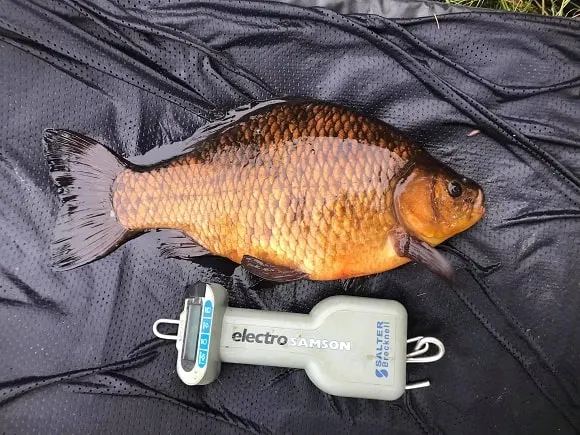
Rod
Use a light and soft waggler rod for crucian carp. This type of rod is totally enough for the often short fight and will absorb the crucians short bursts and strong headshakes very nicely.
As you are fishing so close to the margins, an 11 or 12ft rod will definitely suffice. Also, because it’ll give you more control when playing a fish at close range.
You can find a brilliant pellet waggler rod for crucian on Amazon here.
Reel
A light rod will have to go with a light reel and you really don’t have to use anything bigger than a size 1000 or 2000 model here! Again, you won’t be needing much line at all, which is why a small-sized reel is perfect for this type of fishing.
One of the biggest advantages of using a small reel model is that it won’t weigh much at all, which makes it easier to hold your rod for hours on end without fatiguing your hand.
The Daiwa Ninja NJ1500A is an amazingly smooth and powerful reel that will serve you well on your crucian adventures. You can take a closer look at it on Amazon here.
Mainline
You will want to go as light as you possibly can, as crucian carp are extremely line shy. With that said, a well-camoflaged 4-6lb mainline won’t do your fishing any harm at all!
On the contrary, it will probably save you the occasional crucian that has gotten itself snagged in the lilies or reeds!
Just make sure the line is of a dark colour (preferably dark green or brown). This has really made a difference for me.
I can warmly recommend the 6lb Daiwa Hyper Sensor, as this line is extremely strong for its thin diameter. And with a nice brown tone, it’ll be practically invisible in most crucian venues.
You can check out the Daiwa Hyper Sensor on Amazon here.
Floats
Always have a few 2-3BB crystal wagglers with you when fishing for crucians. Most of the time, the 2BB float will be a perfect choice. But on days with a slight breeze and a disturbed water surface, the slightly longer 3BB will be more visible.
The crystal wagglers are extremely lightweight and practically invisible, making them the perfect float for the sceptic crucian carp!
You can buy a set of top-notch crystal waggler floats on Amazon right here.
Hooks
When it comes to hook sizes for crucian, everything between a size 10 and size 16 wide gape specialist hook will serve you extremely well.
Obviously, the size depends on the type of bait you are using. You can find a simple hook size guide in the next section on the best baits for crucian carp.
The Kamasan Wide Gape Specialist hooks are definitely my number one choice for crucians. A strong and slim shanked hook with perfect hooking abilities. You can buy a set of Kamasan hooks on Amazon here.
Best Baits for Crucian Carp
Crucian carp can be caught on a variety of hookbaits. The important thing to remember is to use smaller-sized baits, as their mouths aren’t very big and they often feed with extreme caution.
One, or a maximum of two small baits on your hook is most certainly enough! Such baits can include the following:
- Sweetcorn (I prefer just a single grain)
- Maggots
- Casters
- Worms (small compost worms are the best)
- Hempseeds
- Soft pellets (Again, just one will do the trick)
As I mentioned, your hook size will have to fit the bait size that you are using. Here is the little guide I put together for you:
| Bait | Hook Size |
| Sweetcorn | 10-12 |
| Maggots | 12-14 |
| Casters | 12-14 |
| Worms | 10-12 |
| Hempseeds | 14-16 |
| Soft Pellets | 10-12 |
Where to Fish for Crucian Carp?
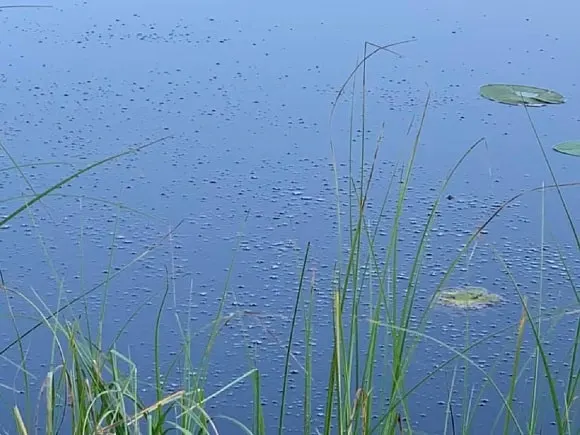
Classic crucian venues are smaller shallow ponds or lakes with heavy vegetation. They especially love patches of lilypads and reeds.
As mentioned above, most crucians are caught very close to the margins, which is exactly where you often find that type of vegetation. We are talking anything from a few inches to perhaps 10-15 feet off the bank.
Crucians like to patrol the margins for food and often keep very close to the bank, where the water is warm, rich in food, and where there is a lot of vegetation for them to hide in.
That’s exactly where you should target them!
When to Fish for Crucian Carp?
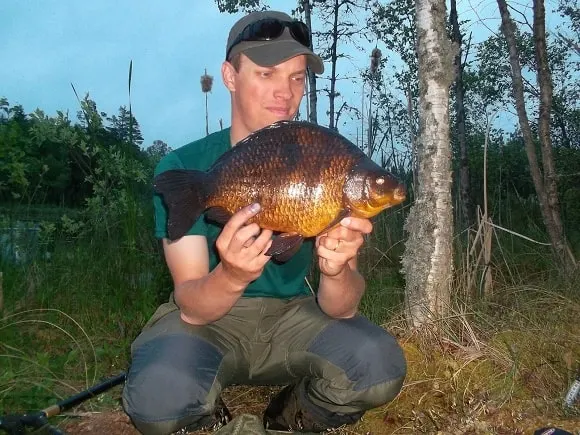
Those shallow crucian venues are much warmer than deeper lakes and when it comes to crucians, the warmer the water the more active they become.
Crucian carp are truly warm water-loving fish and so the best time to fish for them is between May and September.
Obviously, the warmest months of the year, become June and July will be the best months of the year to target crucian. Now, you can basically catch them around the clock. However, I have found very early mornings, as well as late evenings until nightfall to be the most productive times of day.
But already in May, when the sun is warming up the shallow areas of a lake or pond, the chance to catch a crucian in the late afternoon or early evening is often good.
The same goes for mornings and early middays in August and September, when the air and water temperature is still relatively high.
As soon as it gets cold though, the crucians mysteriously vanish. It is virtually impossible to catch a crucian in cold water conditions! So you’re better off targeting other coarse species during the colder months of the year.
Should You Pre-Bait for Crucian Carp?
Pre-baiting, or baiting larger quantities of groundbait or loosefeed is not recommended when fishing for crucian.
These fish won’t eat a lot of feed once they enter your swim and it is rather easy to overfeed them quickly.
That is why I never pre-bait for crucians and only bait and loosefeed very scarcely at the beginning of, and during my fishing session.
We are talking 3-5 plumb-sized balls of groundbait and a few handfuls of particles, such as sweetcorn, small pellets, or hempseeds, to get your swim going.
Once those wonderful feeding bubbles appear, I’d wait until you get the first couple of bites before adding another ball or two of groundbait and 1-2 loads of loosefeed, just to keep them interested and in your swim! Don’t overdo it!
Pro Tip: I have had unbelievable crucian sessions with krill-based groundbait. They really seem to love that flavour! Make sure to always have a kilo or so with you when heading out to the bank. You can pick up a top-notch krill groundbait on Amazon here.
Best Weather Conditions for Crucian Carp
As they are somewhat sensitive to light, an overcast sky is always to be preferred when fishing for crucians.
Additionally, either slowly falling, or a stable low barometric pressure and moderate to warm air temperatures with a very slight southern or southwestern breeze will equal the perfect weather conditions for crucian fishing.
Do Crucian Carp Bite at Night?
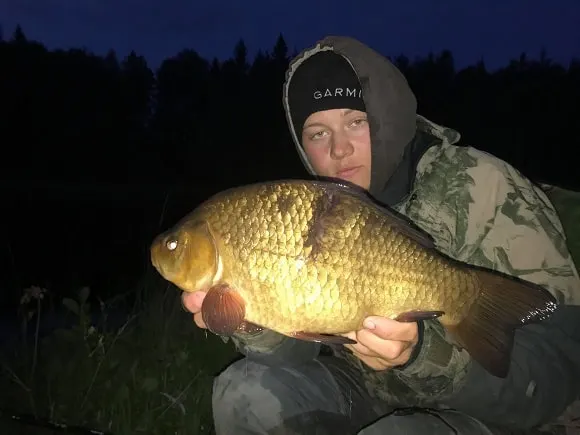
Crucians do bite at night, but in my experience, they aren’t as active as during the rest of the day. I have often experienced a lot of liners and extremely careful nibbles on my hook, but have almost never landed a crucian carp in complete darkness.
It’s as if they can’t really see or pick up your hookbait when the light conditions are getting too bad.
On the other hand, I know of venues that produce a lot of night crucian, so I am guessing that it differs a lot from lake to lake.
Pro Tip: Put a small isotope onto your float tip in order to be able to see those careful lift bites in the dark! You can purchase a pair of nicely visible Drennan Isotopes on Amazon here.
Definitely give it a try, I’d say! If it doesn’t pay off, stick to the lighter hours of the day.
Tight lines!
Related Articles
- Crucian Carp (A Complete Species Guide)
- How to Fish the Lift Method
- Specimen Tench Fishing (An Expert Guide)
Featured image courtesy of Leif Krause

